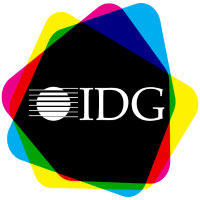
CFOs have a new 800-pound gorilla sitting in the corner, as if they needed another one. Actually, the really lucky ones who oversee operations in Europe and the U.S. will have two. ASC 606 and IFRS 15 are new accounting rules that describe in great detail how subscription vendors should recognize revenue beginning in December 2018, and we should all care about them.
Since the dawn of the subscription economy, companies like Salesforce, Zuora, and loads of others have preached the advantages of buying things as services rather than as traditional goods. Subscribers pay only for what they use, and they never worry about some of the more intricate and arcane aspects of implementation, change and maintenance, because just about all those things are responsibilities of vendors.
However, even though subscriptions have been a staple of business since the turn of the century, there have been few standards to guide the pioneers.
Calming the Chaos
One of the great debates and just plain conundrums of subscriptions has been how to recognize revenue. If a subscriber pays monthly, that’s pretty basic, but vendors often want to lock customers into multiyear contracts with annual invoicing. So, a typical subscription might call for an annual invoice, recognized in monthly increments by the vendor, with the unrecognized revenue sitting in a bank waiting to be dinged.
That’s not the only possibility, though. In fact, there probably are as many ways to recognize revenue as there are vendors, and until ASC 606 and IFRS 15 came along, there was no authority to say which was better.
As you can imagine, a world without ASC 606, “Revenue From Contracts With Customers,” could lead to chaos — especially given the metrics that the industry has auditioned and used over the years.
“Annual recurring revenue,” “monthly recurring revenue,” “unbilled revenue” and “deferred revenue” all have specific meanings, but if your company doesn’t use one or more of these metrics it can become very difficult for financial analysts to make comparisons with other companies. Without comparisons and standards, it’s harder to attract investment and to report to shareholders.
Good Timing
Seventeen years into the subscription economy, after most of the software has been built and refined, we finally have standards for revenue recognition — and that’s a good thing. You might quibble that this should have been done sooner, but I’d disagree. In an emerging market, it’s hard to know what will have staying power and what will be gone next week, so the standards have come along at a good time.
Less wonderful is that the standards would like to be taken seriously beginning with annual reporting periods starting after Dec. 15, 2018, just around the corner. Yes, we’ve seen this coming since 2014 — and no, most of us didn’t do anything about it. Truthfully, did you even know about ASC 606 or IFRS 15 before reading this?
Now we have before us a perfect accounting storm, the likes of which has not been seen since the late 1990s, when businesses en masse took on the four digit date format. Back in those good old days, people worked day and night trying to rip and replace financial systems to meet deadlines. Many of those people are managers today, and they’re in no hurry to repeat the ordeal. Fortunately, they don’t have to.
Several ERP/accounting software vendors are advertising their ASC 606 capabilities, which might undersell the problem. Before having a way to recognize revenue from subscriptions, it’s critical to have the ability to invoice and bill subscriptions as subscriptions rather than as some special case of a product.
So the ASC 606 and IFRS 15 standards are really about an end-to-end process, starting with invoicing and ending with revenue recognition. In between, there’s a lot of change management to deal with as well.
This is a big deal for subscription companies, as well as those that bundle subscriptions with traditional products and services. However, most companies are not prepared to deal with the new standards, according to PwC. Furthermore, this change to accounting rules could be as profound as the four-digit date change.
Zuora to Acquire Leeyo
Into all this Zuora, a provider of accounting and billing software for subscription economy companies, has launched an effort to manage the entire process. Zuora on Wednesday announced its intent to acquire Leeyo, a provider of revenue recognition software.
Over the last three years, the companies have worked at numerous customer engagements, providing customers with the end-to-end order-to-cash support that subscription companies all need.
Leeyo RevPro will become part of the Zuora product set as Zuora RevPro, and Leeyo will become a division of Zuora. Since the companies have worked together on integration for more than three years, delivery of the combined system should be unexciting.
However, as a separate division of Zuora, Leeyo will retain the ability to sell its products and services independently, and that might be exciting.
The opportunity is sizable. Starting with an assumption that almost every subscription vendor will need some form of solution to help comply with the new regulations, this merger is well timed.
The total addressable market for agile monetization platform software will grow to more than US$100 billion between now and 2020, MGI Research has estimated.
Zuora and Leeyo expect their deal to close shortly.























































